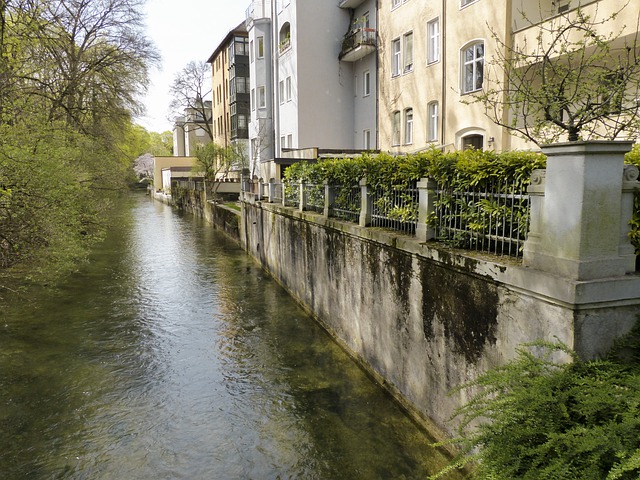
Retaining walls can be important for protecting large soil masses from collapsing, especially near water. Having a retaining wall allows you to control the shape of a space and ensure that the terrain does not change that much over time, something that opens up a lot of new design and landscaping possibilities.
A retaining wall might also be useful for protecting an area from collapsing in on itself, something that might improve safety and prevent unexpected accidents. In the long term, these walls tend to provide more protection than you might think, giving you even more ways to deal with changing terrain.
However, materials matter a lot, and knowing which materials to use is not always easy. How do you approach the issue of choosing a retaining wall material when there are so many on offer?
Retaining Wall Specs
Retaining walls need to bear a horizontal load rather than a vertical one. This means that they need to be constructed with a different approach, one that relies on materials a lot more than a simple dividing wall would.
Because of this, finding the right build material for a retaining wall is not going to follow the same general pointers as any other kind of wall. With very little vertical load to worry about, a lot of stronger materials behave differently, especially as the driveway retaining walls get larger and have to support more earth.
While most walls are anchored in specific ways to ensure that they do not just collapse over forwards, the materials are still going to influence their overall effectiveness as a retaining wall. Because of this, your material choices influence the wall far more than the design they are being used to build.
Retaining Wall Materials
There are a lot of materials that boast qualities that are useful for constructing a full retaining wall. However, each one still differs from the others enough to make the choice a tough one, especially if you have no past experience with retaining walls. It’s also important to be aware of potential construction defects, such as improper drainage or inadequate structural support, which can compromise the stability and longevity of the wall.
Here are some of the most popular options and the benefits they can bring to a standard retaining wall design. Understanding even the smallest differences can have a huge impact on how effective the finished retaining wall actually is.
Poured Concrete
Poured or cast concrete has become incredibly popular due to the clean-cut design and consistent surfacing. This makes it a very smooth and appealing option for people who want a very professional look, and the flexibility of poured concrete allows it to easily be incorporated into existing architecture.
The variety of concrete options can open up more variety than you might expect, and concrete is naturally tougher than block walls would be. This improved density tends to make it crack without proper supports, but adding steel rod supports can boost its massive durability even further.
However, poured concrete is not easy to apply. Building with it takes a lot of skill and setup time, meaning that many people turn to professionals to get the work done for them. It is not a DIY project or even really a small-scale project, and that makes it costly and time-consuming.
Stone Veneer
Stone veneer is both decorative and protective, providing aesthetic value using natural stones that are also surprisingly strong and durable. Using these natural materials means that the wall will not fade or crack over time and also provides more strength than many lightweight artificial materials.
A stone veneer retaining wall is made with a lot of smaller stone pieces, making it fairly lightweight compared to some of the heavier options on the market. This also allows for more flexibility since you can easily curve the cones around corners or include your own additions if you want to customize the wall more.
The natural look and patterns are a great reason to aim for stone veneer surfaces, with the only real downsides being that it can take some time to plan out – and that it tends to cost more than artificial materials.
Brick
Brick might be an obvious answer, but it can make a difference. Aside from being low-maintenance and readily available, bricks can also be incorporated into almost any space extremely well and offer great resistance to fire and weather damage. They also tend not to break very easily, even under heavy abuse.
This high durability and great support are surprisingly eco-friendly since bricks are made out of natural materials like shale and clay. As an added benefit, you can reuse the bricks if you ever take the wall down, either as whole bricks or as broken-down pieces that form a footpath.
However, bricks can be quite costly and heavy, making them a tough thing to install all on your own. The color selection is also often quite limited, and they are not as flexible as other materials – although these last two points may not be a problem for every retaining wall.
Concrete Blocks
Concrete blocks, specifically large concrete retaining wall blocks, are one of the best options for building a solid, sturdy retaining wall. They look modern, offer incredible durability despite their smooth and professional style, and are suitable for installation in all kinds of locations. Their strength also tends to stay consistent under any amount of pressure, reducing damage even further.
Concrete blocks can be incredibly easy to install compared to other materials and are extremely low-maintenance – even if you choose a very ornate, curved variety. Since they are non-toxic and do not contain allergens or harmful chemicals, they are also easy to consider eco-friendly.
The main downside is that you need to get these blocks designed. This often means talking to a professional about the exact shape and size you need, especially if you are looking for something highly specific that matches with the exact shape of the earth you are trying to hold back.
Whatever you are looking for, it is important to figure out what you need and what kind of options work best for those needs. Take your time to explore your options and figure out what kind of retaining wall materials are best for you.



